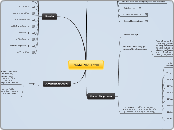Photo 2nd Term
Camera Positions
There are 5 positions OF THE CAMERA ITSELF
◊ Extreme High Angle Shot
◊ High Angle Shot
◊ Eye Level Shot
◊ Low Angle Shot
◊ Inferior Angle Shot
The next 3 positions are given by the framing
and not from the way you place the camera:
◊ Point of view
◊ Over Shoulder Shot
◊ Dutch Horizon Shot
Colour Temperature
Determined by:
The sunrays as they go
through the atmosphere.
Depending on the moment
of the day (sunrise,morning,
midday,afternoon & sunset)
and depending on the specific
place of the terraqueous globe
where the photographer is
taking the picture.
It is measured in Kelvin degrees
and goes from 1,000K (candle light)
up to 10,000K(daylight-blue sky).
I order to make a correct
use of the WHITE BALANCE
This is important because in that way
the image won't be affected by the
moment/place we are taking the photo.
There are 8 types of WB:
۞ Auto White Balance
۞ Flash
۞ White Fluorescent Light
۞ Daylight
۞ Cloudy
۞ Shadow
۞ Incandescent
۞ Personalizes
For this one the photographer must use the
colour graphic in the camera menu to obtain the
white color balance he's looking for for that
specific moment of the day.
In order to use it, one must know
the complementary of light and
pigment primary colours:
R ↔ M
G ↔ Y
B ↔ C
Shooting
Classification
₪ Extreme Big Long Shot
₪ Big Long Shot
₪ Long Shot
₪ Full Shot
₪ American Shot
₪ Medium Shot
₪ Medium Close Up
₪ Close Up
₪ Big Close Up
₪ Extra Big Close Up
₪ Tight Shot
Architectural Fract.
Concept
╚>This means that the object loses
the quality of the volume. So, as
the name says, somehow you
fractionate those volumes of the
object and convert them into
planes that are the picture itself.<╝
For this effect you have to play with the
shadows and the natural light from the sun.
So you can see different kid of levels in the
architecture of the object.
